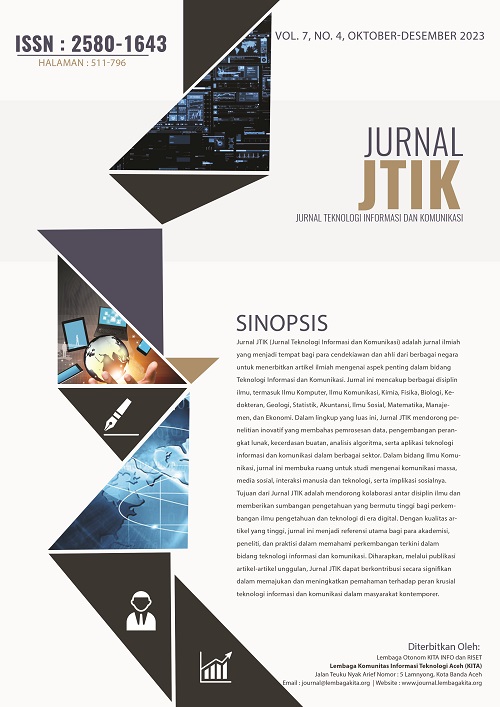Representasi Asertivitas dalam Drama Korea Juvenile Justice
Main Article Content
Abstract
Korean dramas function as a medium to spread messages, values, and habits in society. The Korean drama Juvenile Justice discusses the issue of juvenile crime. This drama provides a judge's perspective in handling these various cases with her assertiveness, whereas, in Indonesia, there is currently no television drama with the theme of courtroom drama. The purpose of this research is to determine a judge's assertiveness when handling case issues and sentencing juvenile criminals in the Juvenile Justice series. This research uses John Fiske's qualitative semiotic approach. The results showed that assertiveness exists verbally and non-verbally. Verbally, daring to differ in opinion, detailed in speaking, precise in intonation, can control emotions, give opportunities to interlocutors to think and speak up, and express facts by reality. Non-verbal is the distance between physical contact and speaking, body language, and appearance. People with competence, good body language, priority for formality, and reasonable emotional control are depictions of assertiveness.
Downloads
Article Details

This work is licensed under a Creative Commons Attribution-NonCommercial 4.0 International License.
References
Ju, H., 2020. Korean TV drama viewership on Netflix: Transcultural affection, romance, and identities. Journal of international and intercultural communication, 13(1), pp.32-48. DOI: https://doi.org/10.1080/17513057.2019.1606269.
Potts, C. and Potts, S., 2013. Assertiveness: How to be strong in every situation. John Wiley & Sons.
Murphy, J. 2011. Ketegasan: Bagaimana membela diri sendiri dan tetap mendapatkan rasa hormat dari orang lain.
Lane, S. D. 1981. Empathy and Assertive Communication.
Sugiyono. 2011. Metode Penelitian Kuantitatif, Kualitatif dan R&D, Bandung. Alfabeta.
Sobur, A. 2009. Semiotika Komunikasi, Bandung: PT Remaja Rosdakarya. Wacana Media.
Wibowo, I. S. W. 2013. Semiotika komunikasi Aplikasi Praktis Penelitian dan Skripsi Komunikasi. Jakarta: Mitra Wacana Media.
Fiske, J., 2010. Television culture. Routledge.
Pah, T. and Darmastuti, R., 2019. Analisis semiotika john fiske dalam tayangan lentera Indonesia episode membina potensi para penerus bangsa di kepulauan sula. Communicare: Journal of Communication Studies, 6(1), pp.1-22. DOI: https://doi.org/10.37535/101006120191..
Pratista, H. 2008. Memahami Film, Yogyakarta: Homerian Industri. 2016. Memahami Film Edisi, 2.
Kim, U., 1995. Individualism and collectivism: A psychological, cultural and ecological analysis (No. 21). NIAS Press.
Hafizhah, N., 2020. Dinamika Perilaku Asertif Remaja (Studi tentang Bentuk dan Faktor yang memengaruhi Perilaku Asertif) (Thesis, Universitas Hasanuddin).

